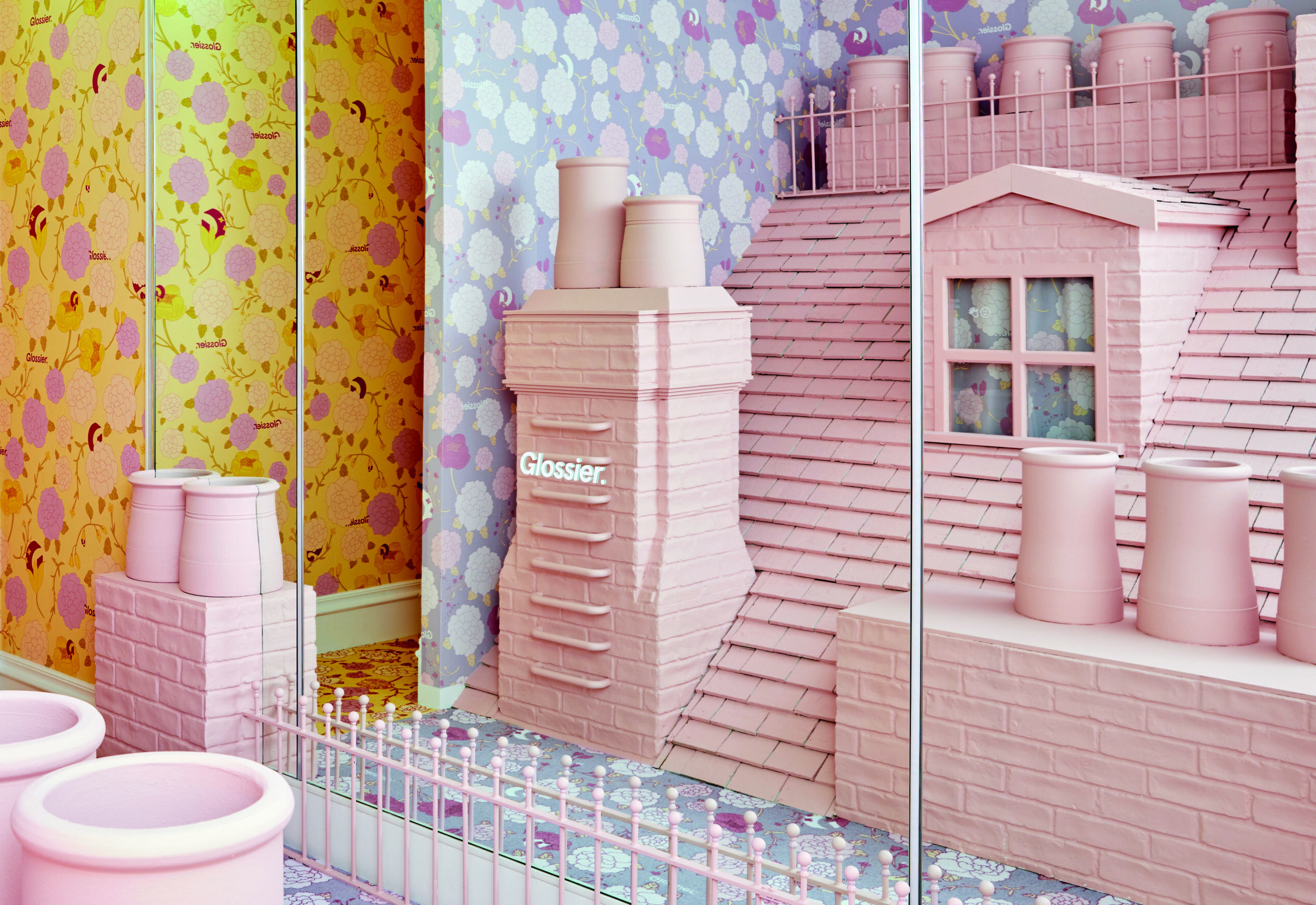The Rise of Experiential Retail – The Drift from Browsing to Belonging
‘Retail isn’t about convenience anymore; it is about how it makes you feel…’
Consumers today, expect more than just ‘products’. With every retail interaction, they want stories, emotions and moments that live in their memories and dazzle in social media.
These rising expectations has ushered an era of experiential retail, where ‘purchase’ becomes a part of a larger, memorable experience. In this bold new chapter of commerce, transaction isn’t the end of the funnel, but the commencement of a deeper, more meaningful and long-term connection that leads to elevated CX and higher CLV.
Experiential retail is currently a $132 billion (USD) market (2025) and is expected to reach a whopping $543.45 billion (USD) by 2025 at 15.2% CAGR. The figures reflect a fast, flexible and fiercely creative retail revolution lead primarily by pop-up stores and smart vending machines, that are transforming traditional shopping into a high-impact, sensory adventures.
In this blog, we shall explore why experiential retail is rising, how pop-ups are stealing the spotlight in brand activation, and what it means for the future of shopping.
What is Experiential Retail?
Experiential retail moves beyond the traditional ‘buy-and-leave’ model to offer something richer; a feeling, a story, an emotional connection. This retail innovation prioritizes ‘experiences’ surrounding the purchases, making it primarily a consumer-led shift, in comparison with the conventional, strictly transactional retail model.
The Psychology Behind Experiential Retail – The IKEA Effect
Experiential shopping has harnessed one of the key Human Factors, i.e. ‘emotions’, to build uninterrupted continuity in brand interactions. Emotions drive memories and memories in turn, influence decision making. For brands that create good memories, where customers feel a sense of belonging, respect and visibility, experience repeat purchases.
To an extent, businesses have banked on the IKEA effect, where customers can physically alter products with their unique touch of personalisation resulting in a deep sense of ownership and purchase experience, thereby, generating frequent future interactions.
For example, many beauty brands allow customers to create their own eye or lip palettes with colours of their choice and many cafes invite customers to create their own unique brews; creating a unique product under the same brand, but something that no one else can own.
Social Validation – Shareable Memories; Instant UGC
This retail trend thrives on fueling social validation by creating moments that can be shared easily on social media and often, highlighting added benefits like loyalty points, freebies on next purchase etc. These moments are instant dopamine for customers, that turn them into return customers and grass-root brand ambassadors.
From interactive installations and live demos to workshops and personalization pods, experiential retail taps into all five senses, building loyalty; not just baskets.
The Evolution of Pop-Up Stores
The Ritual Expo, Los Angeles, 1977, is one of the first recognized modern pop-up stores that elbowed its way into the retail landscape, paving the way for a ‘pop-up shops’ era dawning in the late ’90s and early 2000s. These quirky, short-term spaces designed to surprise and delight periodically with novelty brand activations or seasonal sales, are now a norm and have become powerful platforms for storytelling, testing and connection for brands.
After the COVID-19 pandemic and waves of digital fatigue, pop-ups experienced a renaissance. With real estate becoming more flexible and consumers craving offline engagement again, pop-up shop openings grew by over 40% in urban markets between 2021 and 2023.
Fun Fact – Did you know, pop-up stores date back as early as the Vienna Markets in the 13th century!
Why Pop-Ups Are Gaining Momentum
Pop-up retail is expected to generate over $95 billion (USD) by 2025!
And, here is a quick insight into why are brands betting on temporary over traditional –
- Low overhead, high impact: Pop-up stores boast no long leases, no heavy inventory and less manpower. This reduces costs significantly, making them ideal for emerging brands or established players looking to experiment.
- Market testing, done right: Testing a new city or launching a limited-editions; pop-ups offer on-the-spot consumer feedback. According to a 2024 retail trends report, 65% of DTC brands used pop-ups to test new markets before expanding.
- Social buzz and FOMO: The exclusivity of pop-ups naturally creates urgency. Limited-time-only equals Instagram gold. Studies show that pop-ups generate double the social engagement than conventional retail campaigns.
- Story-first branding: With creative freedom and focused space, pop-up stores become blank canvases for narrative-rich experiences, from immersive brand journeys to community-led activations.

Source : Beauty pop-up store
Benefits for Brands and Consumers
For Brands, the benefits of experiential retail are profound, and highlights,
- Higher CX, CLV and ROI – Interactive formats drive deeper engagement that increase dwell time, leading to higher possibilities of conversions and repeat purchases.
- Gaining Stronger Brand Loyalty – Research reveals, consumers who participate in brand experiences are more inclined to buy later-on.
- USP and Competitive Strong-hold with Storytelling – Pop-ups give brands a stage to showcase identity, values and innovation, leading to a significant competitive advantage.
For Consumers, experiential retail is dopamine, with
- Exclusivity and excitement: Pop-ups feel real and personal, creating a sense of discovery, and access to exclusivity.
- Connection over commerce – In a world of soulless transactions, pop-ups bring back human touchpoints and community interactions.
- Memory over merchandise – Customers love creating sharable memories in pop-ups that often help them get viral on social media; a trend that no one wants to miss.
Real-World Examples of Successful Pop-Up Stores
- Glossier: The beauty brand’s pop-up in London generated over 100,000 visitors in just a few weeks, driving both in-store and online sales. The space was designed like a chic apartment, blending playfulness with product exploration.
- IKEA’s ‘The Dining Club in London: A fully immersive restaurant where roughly 20 customers could cook with IKEA chefs. It wasn’t about selling furniture; it was about ‘living the brand’.
- Nike’s House of Innovation pop-ups: These included AR try-ons, digital customization stations and exclusive drops, aligning tech with sport-lifestyle culture.
- Oatly’s mini-market: A quirky pop-up grocery store in NYC turned oat milk into a cultural movement. Bold signage, samplings and cheeky brand voice helped drive a surge in social media impressions highlighting soft-serve food and ice-creams.

Source : pop-up store
The Role of Technology in Experiential Retail
Technology is the engine driving personalization and immersion in experiential retail. Some of the key players are
- Augmented Reality (AR), lets shoppers virtually try on clothes, accessories or makeup. As per market research, 40% customers are willing to pay more for products that they can experience through AR.
- Virtual Reality (VR) transports visitors into branded worlds; from surfing with a lifestyle brand to walking through a product’s origin story.
- Smart tech integration like heat mapping and facial recognition helps brands understand customer needs in real-time.
- IoT for smart shelves and inventory mapping as well as data analysis to position the right products before the right buyers.
- Data collection and personalization, allows Pop-ups, when integrated with mobile apps or QR check-ins, to gather customer insights that improve product strategy, without feeling invasive.
How Pop-Up Stores Are Redefining the Future of Shopping
Pop-up stores are reshaping retail by offering an agile alternative to traditional, fixed storefronts. Instead of long-term commitments, brands now favour flexible, experience-led locations that let them meet customers where they already are, whether that’s at cultural events, city centres, or seasonal hotspots.
Pop-ups are also becoming a valuable part of e-commerce and omnichannel strategies. By bridging the gap between physical and digital, they allow shoppers to explore products in person and complete their journey online, or vice versa; creating a seamless brand experience across channels.
Looking ahead, pop-ups are set to evolve into hybrid, community-driven models as more and more brands are using them not just to sell, but to host events, collaborations and purpose-driven activations that deepen customer engagement.
In short, pop-ups are redefining shopping as something more dynamic, connected and personal; a trend that is here to stay.

